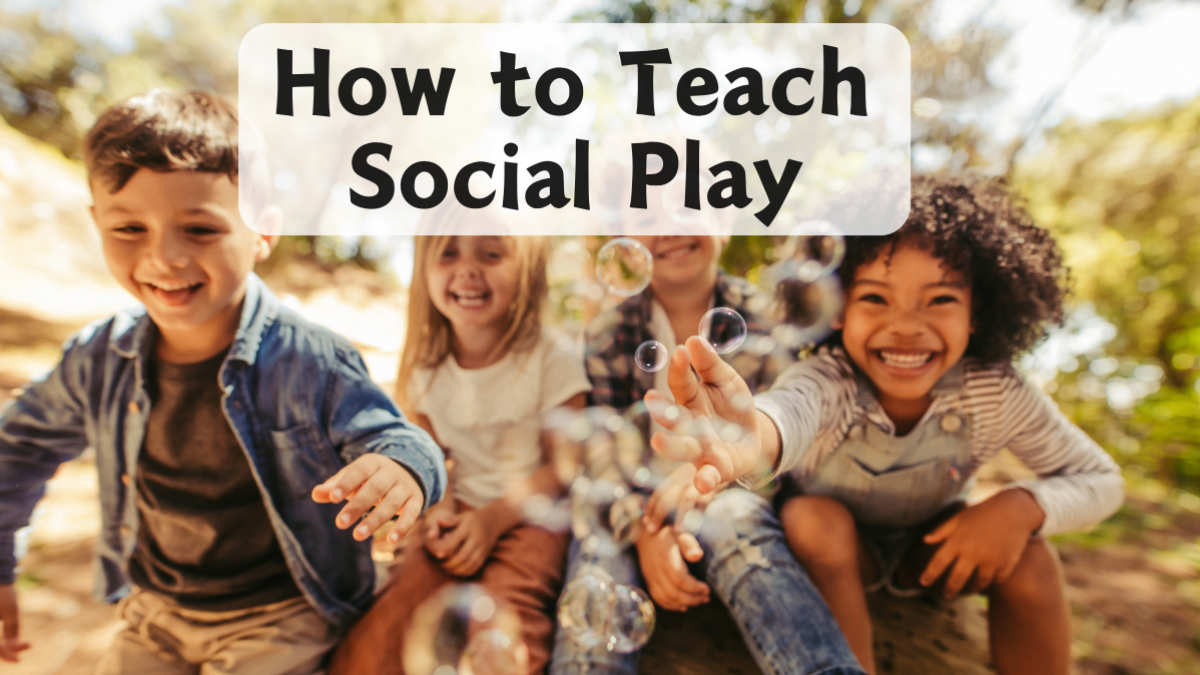How to Teach Social Play

Social play can be complicated and doesn't come effortlessly to all kids.
Ever look at a group of school children playing a game of tag? From afar you see lots of running around, sporadic chatter, laughter. It seems so effortless.
Don’t be fooled. Cooperative play encompasses a myriad of skills and putting those all together can be complicated for many children.
Looking more closely at how play happens, the first step is usually reaching a consensus of which game the group is going to play-are they going to play tag? Which version? Who’s it first? Then everyone needs to understand the rules of the game, keep personal space appropriate to the game, and know how to tag with just the right amount of force.
How do we even begin to tackle the intricate world of social play?
1. Break it down
Don’t skip over the prerequisite skills. This is an extremely common mistake and can stagnate social growth. Some of the most basic questions to be asked include:
Does the child have motivation to be part of the game? If not, start here! This is huge! Why doesn’t he or she like it? Knowing the why will tell you what to teach.
Is the child able to follow directions? If so, how fast can he or she process those directions?
Can the child tolerate change? Playground games are often fluid, rules change, kids cheat –how can that be handled?
Social assessments can help immensely in terms of acquiring a social play baseline and understanding the next steps.
2. Reward the skill you want to see more of
Small stickers, verbal praise, smiles, thumbs up, silly faces … use what the individual child finds rewarding enough to repeat that behavior.
Do not be afraid of using external rewards! As long as you have a plan for fading out, you should do what you need to motivate your student.
Rewards can be done directly after you observe a desired skill (e.g. Child shares and then gets a sticker on the hand). Or it can also be down as the activity is happening. Putting a small bowl of favorite chips next to a child or putting on her favorite music as she rolls a ball back and forth signals that even if the skill is hard and not inherently fun (yet!), the chips counter balance the effort.
Repeated association of something preferred (chips/music) to something non-preferred (rolling the ball) will soon make rolling the ball a preferred activity.
3. Practice, Practice, Practice
If your students can’t play “Follow the Leader” because they have trouble imitating, incorporate the skill of imitation daily.
Make funny sounds or faces in a playful way so that she will want to imitate you. Show her how. Repeat and reward.
Do activities together such as setting the table, you put one plate down, she puts the next one down. Then move on to placemats, you put the first one, she puts the next.
4. As soon as you can, get out of the way!
Children typically look at parents, caregivers and teachers for confirmation that they have done something correctly-especially if it’s a skill they are unsure of. Once children start to have some consistency in their success, take yourself out of the picture and let the fun of the activity be the confirmation. Send the signal that they can do it!
If you are interested in learning how to set up and run Social & Skills Groups, Social Skills Groups for 21st Century Kids is for you!
_____________________________________________________
RELATED ARTICLES:
3 Games to Improve Inhibitory Control
Categories: : kids, learning through play, play skills, social emotional learning, social skills

I'm a Board Certified Behavior Analyst and former Special Education Teacher dedicated to teaching kids the 21st Century Social Skills they need to live happier, healthier lives
Diana Cortese
Founder, Teach Social Skills
 Diana Cortese
Diana Cortese 
